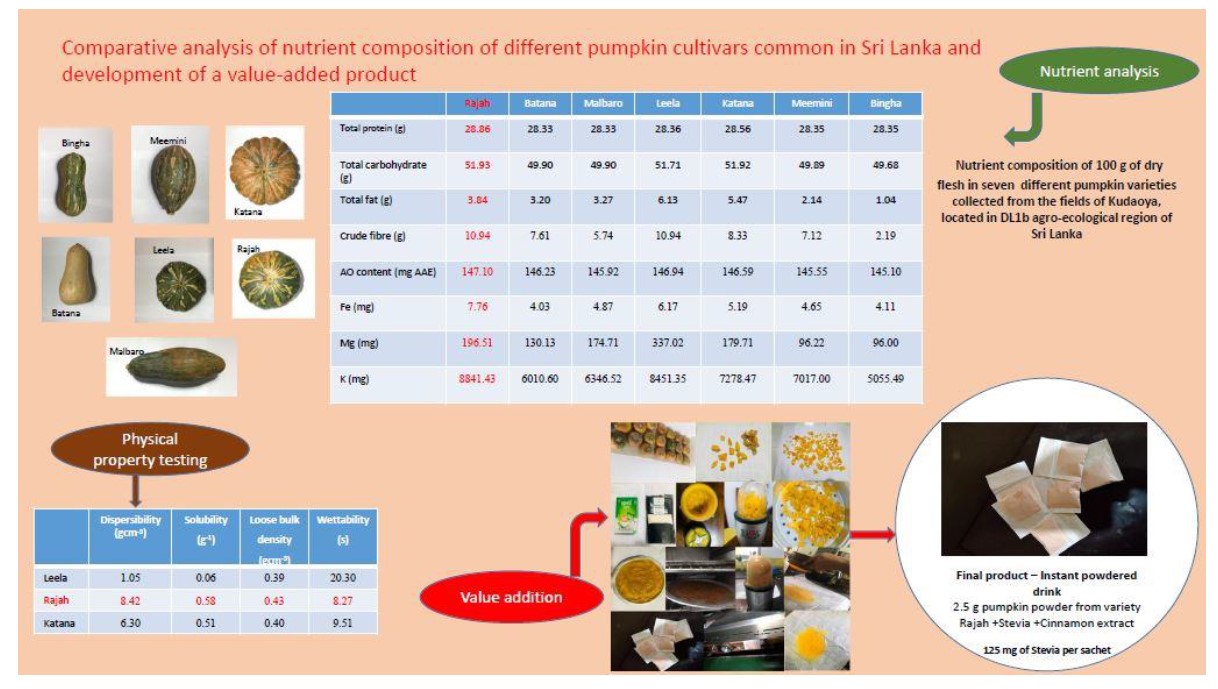Nutrient analysis of local pumpkin varieties (Cucurbita spp.) grown in dry zone of Sri Lanka and development of a value-added product
DOI:
https://doi.org/10.31357/vjs.v26i01.6410Abstract

Cucurbita spp. generally recognized as pumpkins in Sri Lanka, is a commonly grown vegetable in the dry and intermediate zones in the island. C. maxima and C. moschata are the highly popularized cucurbits and they include number of varieties including open pollinated varieties (OPVs), hybrid and imported varieties. The study was aimed to conduct a nutrient analysis of 7 pumpkin varieties collected from dry zone low country 1b (DL1b) agro-ecological region of Sri Lanka and development of a value-added product considering the nutrient composition of the varieties. The proximate, mineral composition and the antioxidant activity were evaluated using standard analytical methods and compared the varieties through one-way ANOVA. According to the study results in 100 g of pumpkin flesh powder, protein content was ranging from 28.33-28.86 g, carbohydrates from 49.68-51.93 g, fat content from 1.04-6.13 g, crude fibre from 2.19-10.94 g, Fe content from 4.11-7.76 mg, K content from 5055.49-8841.43 mg, Mg content from 96.0-337.02 mg and antioxidant activity from 145.10-147.10 mg AAE (Ascorbic acid equivalent) in the analysed pumpkin varieties in dry weight (DW) basis at 95 % confidence interval. As per results, the three varieties of C. maxima have expressed significantly higher values (p<0.05) during the nutrient analysis compared to the moschata varieties. For the development of the instant powdered drink as the value-added product, ‘Rajah’ which is a C. maxima variety was used considering its nutrient richness over the other tested varieties and due to its significantly higher (p<0.05) dispersibility (8.42 gcm-3), solubility (0.58 g), loose bulk density (0.43 gcm-3) and low wettability (8.27 s). Considering the overall acceptability rated as 3.80 out of 5 from the sensory evaluation, the instant drink made by supplementing cinnamon extract and stevia in 1:1 was finalized as the value-added product. The knowledge on the compositional and physical property variation among different varieties of pumpkin and the value addition information of pumpkin would be useful in future value additions which emphasize products’ nutritional and nutraceutical parameters.
Key words: Cucurbita spp., Dry zone low country, Sri Lanka, Nutrient analysis, Value addition



